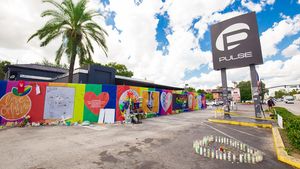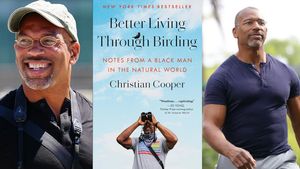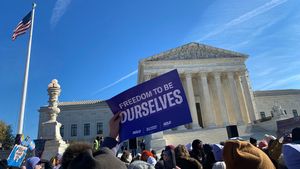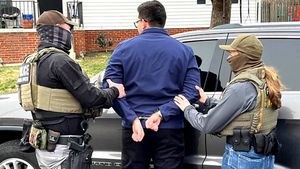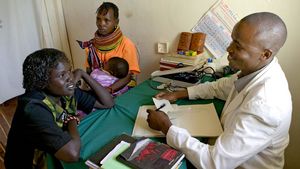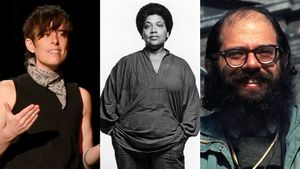(CNN) — The US Preventive Services Task Force is proposing that all women at average risk of breast cancer start screening at age 40 to reduce their risk of dying from the disease, according to a new draft recommendation statement.
It's an update to the 2016 recommendation, in which the task force recommended that biennial mammograms, which are x-rays of the breasts, start at age 50 and that the decision for women to screen in their 40s "should be an individual one."
Some groups, such as the American Cancer Society, already have been recommending for women to start mammograms in their 40s.
"Our new task force recommendation is recommending that women start screening with mammography for breast cancer at age 40 and screen every other year until age 74," said USPSTF Vice Chair Dr. Wanda Nicholson, a senior associate dean and professor at George Washington University's Milken Institute School of Public Health.
The USPSTF, a group of independent medical experts whose recommendations help guide doctors' decisions and influence insurance plans, released the proposed update to its breast cancer screening guidance Tuesday. The recommendation is not final but will be available on the task force website for public comment through June 5, along with a draft evidence review and draft modeling report.
The draft recommendation is for all people assigned female at birth, including cisgender women, trans men and nonbinary people, who are at average risk for breast cancer.
Nicholson said that women with dense breasts and those with a family history of cancer generally fall into this category but not women who have a personal history of breast cancer or a family history of genetic mutations, like mutations on the BRCA gene, as they are considered to be at high risk.
The updates would not apply to those at an increased risk of breast cancer, who may already have been encouraged to screen at 40 or earlier. They should continue to follow the screening practices that their doctors have recommended.
Breast cancer is the second most common cancer among women in the United States, and rates of death are highest among Black women.
'Screening alone is not enough'
The update to the recommendation "will save more lives among all women," Nicholson said. "And this is particularly important for Black women, who are 40 percent more likely to die from breast cancer."
The draft recommendation comes a few weeks after a study in the journal JAMA Network Open found that the rate of breast cancer deaths among women in their 40s was 27 per 100,000 person-years for Black women, compared with 15 deaths per 100,000 in White women and 11 deaths per 100,000 in American Indian, Alaska Native, Hispanic and Asian or Pacific Islander women. The researchers suggested that Black women start screening at younger ages, around 42 instead of 50.
The USPSTF members are calling for more research into these racial inequities in breast cancer, Nicholson said, and for all women who get abnormal mammogram results to receive equitable follow-up evaluations, additional testing, biopsies and treatment when needed.
"Screening alone is not enough. Once someone screens with an abnormal mammogram, the subsequent steps in care must occur — timely follow-up, biopsies that are indicated — and Black women must have access to equitable treatment," she said.
"We're calling for more research to look across the health systems as to why these inequities occur," she said, adding that the draft recommendation also calls for more research into whether women with dense breasts should get additional screening and among "women who are 75 years of age and older, whether and how to screen that population."
Cases in younger people
To review and update breast cancer screening guidance, the task force members analyzed data from thousands of study abstracts and hundreds of research papers on screening programs, cancer cases and deaths in the United States.
They found that screening with mammograms every other year provided a moderate benefit to women ages 40 to 74, as the benefits, such as detecting cancer early, outweigh potential harms, such as the risk of a false positive that could lead to unnecessary tests and emotional stress.
The evidence is "insufficient" to determine the risks and benefits for screening in women 75 and older, the group determined.
The task force also noticed that the rate of breast cancer diagnoses has been rising each year among women at younger ages.
Population-based data "showed that the rate of breast cancer diagnoses was increasing at 2 percent annually since 2015. So more women than ever before are being diagnosed in their 40s," Nicholson said.
An estimated 12.9 percent of women born in the United States today will develop breast cancer at some time during their lives, according to the National Cancer Institute.
"Within our recommendation, we're calling for more research to have a better understanding of the causes and mechanisms that may be contributing to breast cancer development in all women, and in particular among Black women," she said. "We know that Black women continue to have more aggressive tumors."
A paper published in October in the journal Nature suggests that the incidence of various cancers diagnosed in adults 50 and younger has been rising in many parts of the world since the 1990s.
"The rising incidence of early-onset cancers is probably partially attributable to increasing uptake of screening and early detection before the age of 50 years, to variable degrees across certain cancer types, especially breast, prostate and thyroid cancers," the researchers wrote.
"However, increasing incidence of early-onset cancers in several organs, such as colorectal and pancreatic cancers, which might not be fully explained by screening is also apparent," the researchers wrote. "This trend could reflect increased risk factor exposures in early life and/or young adulthood."
To screen biennially or annually?
The draft recommendation appears to be catching up with what other organizations have been recommending for some time.
It aligns more closely — but not entirely — with American Cancer Society recommendations that women ages 40 to 44 have the option to screen with a mammogram every year, women 45 to 55 get mammograms every year, and women 55 and older can switch to a schedule of mammograms every other year.
"There are some similarities and some differences. So, now, the new task force recommendations has changed from screening at age 50 to age 40. And our recommendations currently are that women should begin to have the opportunity to begin annual screening if they choose beginning at age 40. The big difference there is, we recommend annual screening at that age, while the task force recommends biennial screening," said Dr. William Dahut, chief scientific officer of the American Cancer Society, who was not involved in the USPSTF draft recommendation.
"But the big thing is, I think, a lot of women were being screened probably starting in their 40s, and so this is consistent, I think, with how most women and practitioners have been looking at screening," he said.
Both the USPSTF and the American Cancer Society recommendations are for women at average risk. Dahut said that women should talk to their doctors about whether they might have a higher risk for breast cancer and what screening practices would be best for them, including factors like a family history of ovarian or breast cancer or dense breasts, which have less fatty tissue and more connective tissue and have been associated with a higher risk of breast cancer.
"The change in guidelines by the USPSTF to endorse screening mammograms for average risk women 40 and over is warranted, incorporates more modern and 'real world' data into the science informing the guidelines and will hopefully prompt payers to provide better coverage for women seeking breast cancer screening," Dr. Laura Dominici, a breast cancer surgeon at Dana-Farber/Brigham and Women's Cancer Center, said in an emailed statement. She was not involved in the USPSTF draft recommendation.
"This is particularly important related to racial disparities in screening, as Black women are more likely to develop aggressive cancers at younger ages, contributing to worse outcomes," Dominici said. "I am glad to see inequities in screening being acknowledged, but more attention to this will be needed in future guidelines."
Still, the new draft recommendation will not change how Dr. Maxine Jochelson discusses breast cancer risks and the important of screening with her patients, she said.
"Unfortunately, the fact that they're still recommending every other year rather than yearly screening, and in particular in the younger population, is very disappointing," said Jochelson, chief of the breast imaging service at Memorial Sloan Kettering Cancer Center in New York, who was not involved in the USPSTF draft recommendation.
"You are going to miss earlier cancers if you're waiting longer, and younger women and Black women often have more aggressive cancer," she said. "I'm going to still tell them to have yearly screening."
The-CNN-Wire
™ & © 2023 Cable News Network, Inc., a Warner Bros. Discovery Company. All rights reserved.
- Robin Roberts Shares Update on Partner Amber Laign's Health Amid Battle With Breast Cancer ›
- US Breast Cancer Rate Drops 43% in Three Decades ›
- Black Women Need Breast Cancer Screenings 8 Years Earlier ›
- Why Breast Cancer Screenings Are Important For Men, Too ›
- Childhood Cancer Rates Have Are Going Down — Just Not For Black and Hispanic Children ›
















